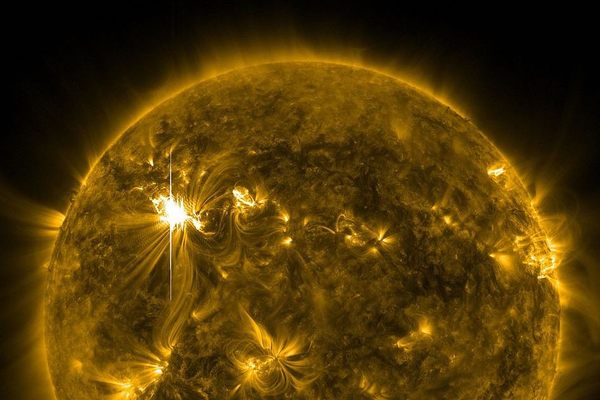A Supercomputer Has Created the Largest Virtual Universe Ever Made
Looking for dark matter takes some mind-blowing computing power.

Anyone that’s played a modern open-universe video game can attest to how large simulated worlds can get, but they’ve got nothing on an incomprehensibly large universe simulation that was recently created by a supercomputer at the University of Zurich.
Calculated using “2 trillion digital particles” of information meant to represent dark matter, the simulated universe contains some 25 billion virtual galaxies, making it the largest universal simulation ever. Visually, it looks like an almost impossibly complex and chaotic web.
According to Science Alert, the simulation, which took three years of research to develop and implement, was mapped by the Piz Daint supercomputer at the Swiss National Supercomputing Centre. It took the powerhouse computer 80 hours to complete the calculations, which is actually considered pretty fast. The resulting simulation of our universe is both the largest and most accurate view of our universe (and its history) ever created.
The simulation was created for use with the Euclid satellite which is set to launch in 2020. The Euclid’s six-year-mission will be to look for and study evidence of dark matter and dark energy, those maddeningly hard-to-find forces that are thought to make up the majority of the universe. Using the simulation as a basis of comparison, the satellite will look for variations in the observed light of the universe, hoping to detect evidence of any influence by invisible dark forces.
Before the satellite launches, researchers will also study the simulation to see what they can learn just from their calculations. The mind boggles.

















Follow us on Twitter to get the latest on the world's hidden wonders.
Like us on Facebook to get the latest on the world's hidden wonders.
Follow us on Twitter Like us on Facebook